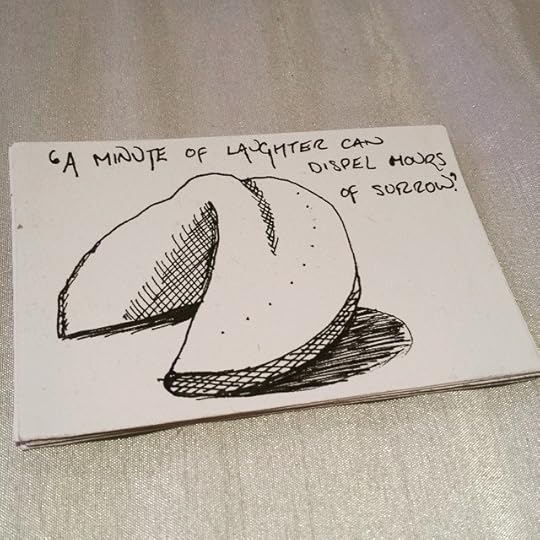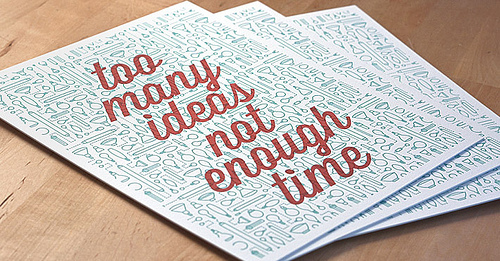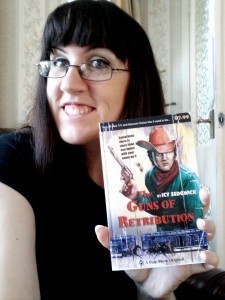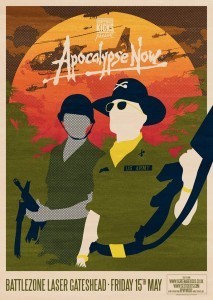Icy Sedgwick's Blog, page 63
May 19, 2015
#Craftblogclub Gift Swap Reveal
 Back in March, the #CraftBlogClub community started on the latest group challenge, the Spring Clean Gift Swap! The concept was simple – we had to create and send a gift to a fellow #CraftBlogClub-ee, using only the materials we had at home. This tied in with the ‘spring clean’ theme, to use up those materials that have been lying around, or need a bit of love to get them out of our stashes. I was really lucky to get the lovely Nadia from Abso-knitting-lutely as my recipient, and by an even bigger stroke of luck she got me!
Back in March, the #CraftBlogClub community started on the latest group challenge, the Spring Clean Gift Swap! The concept was simple – we had to create and send a gift to a fellow #CraftBlogClub-ee, using only the materials we had at home. This tied in with the ‘spring clean’ theme, to use up those materials that have been lying around, or need a bit of love to get them out of our stashes. I was really lucky to get the lovely Nadia from Abso-knitting-lutely as my recipient, and by an even bigger stroke of luck she got me!
As Nadia does such lovely knitwear and crochet work, I thought it would be silly to make something yarn-related, so I went down the jewellery route instead. First up was this bracelet.

It’s a simple charm bracelet base, with acrylic leaves in autumnal shades as charms. I got the charms a while ago, and the pink/purple/white versions are in this bracelet that I have for sale on Etsy. I’ve been wondering what to do with the autumn colours, and this seemed like the perfect opportunity to use them!
I also made a choker as well, using acrylic beads in a hammered bronze finish, and a metallic coffee colour. It’s nice and chunky, and the tiger tail core makes it flexible but durable.

I’ve been reliably informed that Nadia likes them both!
I was very lucky to get some beautiful crochet work in return, and I’m using Nadia’s photos from her blog post because they’re way better than the ones I tried to take! First up is this gorgeous rose garland.

I think I’ll hang this one up in the office at work – it’s so pretty. Here’s Nadia’s post about it in case you want to make one too (and I totally think you should). But wait – there’s more! I also got this funky sparkly black spiderweb garland – I’m torn between hanging it in my room from my book shelves, or wearing it like a scarf!

If you like the sound of #Craftblogclub, come and join us at the hashtag on Twitter every Tuesday between 7-8.30pm GMT!
May 18, 2015
Can rules help or hinder creativity?

Paintbrushes. © John Morgan 2008.
Last week I talked about why having too many ideas can be as bad as having too few, but this week I want to continue the theme of ‘Creativity’ by looking at the value of creative rule systems.
Stop shuddering at the back there.
Rules do not inhibit creativity. In fact, you could argue that they promote creativity through the need for flexible thinking.
For example, I’ve been writing stories to post on my blog every Friday since around 2010 as part of the Friday Flash community. The rules? The stories must be 1000 words or less, and be a self-contained story that is shared with others. You comment on the flashes of others, and they comment on yours. Sure, we all sometimes bend the rules a little to turn a single flash into the start of a serial, but all subsequent episodes will still fall within the 1000 word limit.
The beauty of the word limit is it forces you to prune your writing back to what is absolutely necessary to tell the story. You can use it as a playground to explore ideas that you’ll later flesh out through short stories or novels. By learning how to prune, you’re teaching yourself out to write more tightly, and even edit your own work. Neat, eh?

This is one of my favourite street names. © Icy Sedgwick 2013.
Say you’re an artist, and you want to impose a creative rule. You’ll make a project where every aspect can only be coloured using cyan, magenta, yellow or black. It forces you to think more creatively about what you can or can’t include, which will strengthen the final pieces. So you want to do something green or orange? Set up a separate project for that!
Maybe you want to explore photography – challenge yourself to take a new photograph every day for a week, or a month (I did the #imageaday challenge in 2013). Why not make yourself take a photograph of wherever you are at 8:30am every Thursday? (Actually, I might try that)

I drew my fortune cookie, and the fortune inside it. © Icy Sedgwick 2015.
I’ve been trying to impose a creative rule on myself to create one new drawing every day. I don’t always manage it, but I’ve certainly been trying, and I’m going to make myself do it going forward so it becomes a habit. The benefits are;
I use it as a way to try out a new technique or medium,
If it doesn’t work out, it’s alright because I haven’t spent a lot of time on it,
I can start to develop my own style by learning what works and what doesn’t work.
Creativity is like a muscle – the more you exercise it, the easier it becomes to use it. I certainly want to impose a new creative rule to write something every day. I have lots of commitments but I can easily squeeze in 100-250 words every day – anything more is a bonus. So it doesn’t matter if it’s on an existing project, or just a vignette – I want to fill my notebook with creative writing every day.
If you’re interested in rule systems and how they can help creativity, check out this video by Kate Bingaman Burt on automated directives and creative rule systems! A lot of what she says applies to photography or illustration, but you could easily substitute those for blog posts, writing, knitting, or any other creative endeavour!
What do you think about creative rule systems? Do you use any?
May 15, 2015
#FridayFlash – Don’t Lose Your Head

Cryogenics, from the National Institute of Standards and Technology
I lie in my hospital bed, feeling the life slowly drain out of my body. It started in my toes and worked its way up my legs. Now I can’t feel anything below my hips. This should worry me, or send me into a panic, but it doesn’t. Death won’t be the end, not for me. I’ve made plans. I’ll just sleep away the years until science can regrow a new body for me. Ah, they’re here now, I can see the collection team out of the corner of my eye. I expected them to have saws, or at least some kind of container for my head, but they don’t. I suppose they’ll do that sort of work away from the hospital. They talk to me, offering reassuring platitudes, but their voices grow dim and I close my eyes. A figure comes for me, and I can’t decide if it is Death or Sleep before the world goes dark.
* * *
My eyes flutter open before I realise I am awake. Panic crashes over me in an awesome wave. Where am I? What’s going on? My eyes won’t focus properly and I can’t blink properly. All I can see is a dim haze of white, traced with dark grey, like crystals of frost on a windscreen. Cold fluid fills my nostrils and ears, and the shouting going on beyond my vision sounds as if it were miles away. Who’s shouting? Shouldn’t I be asleep in the facility? A needle of hope pierces the panic – maybe they’ve found a way to bring me back, to add my head to a new body.
Suddenly a dark shadow passes before the white haze in front of me, and the fluid around me moves. It’s more like syrup than water, and I move with it, first towards the white haze, and then to the side. The voices are louder now, but I can’t recognise the words. I don’t think I even know what language it is. This can’t be good. I slide forwards again and my forehead bumps against the white haze, which feels a lot like glass on my preserved skin. There is another jolt and I slip back into sleep.
* * *
Bright light stings my eyes when I try to open them. There is no white haze this time, no cold fluid on my face, just cool air and battered strip lights overhead. I part my lips and waggle my tongue. I am aware of a body below my neck, but it does not feel like my body. This body feels…alien. The doctors warned me of this, and I look around to try and see where they are. I expect to find myself in a recovery room, surrounded by whatever futuristic technology now exists, but my heart drops when I see cracked tiled walls coated in mildew. Broken ceiling tiles lean against the strip lights, and the only clean thing in the room seems to be the stainless steel bench that runs the length of one wall. There are no windows.
I try to lift an arm, not expecting the nerves to be bedded in yet, but to my surprise the arm moves. I lift it into my view, and recoil in horror. The arm is shiny and black, with scales where my flesh should be, and it terminates in vicious claws. The fluorescent light dances along their serrated edges. What is this? This cannot be my arm. I raise the other arm, and find it to be the same. A scream threatens to erupt but it dies in my throat when my body sits up of its own accord. The rest of my new body matches my arms – shiny black scales covering hard muscle, with long feet topped by more claws. It gets worse when I spot the long tail lying between my legs. It tapers to a razor sharp point, a stinging barb meant only for fatal wounds.
My body helps me to stand up, and vertigo grips me when I realise that the body is friendly. A series of clicks and whirrs unspool in my mind, and even though they sound like the chittering of insects, I understand them. The body is greeting me. Worse, it is glad I am awake. It reassures me that it knows what it’s doing. I expect to feel unbalanced, or unable to walk, but the body takes me across the room in graceful strides. It opens the door, wrapping its claws around the handle.
A maze of corridors lie beyond the door, but the body seems to know where it’s going. Panic and confusion have paralysed me, and it is oddly comforting to let the body do whatever it wants to do. It moves along the corridors with ease, its claws clicking on the broken linoleum floor. I cannot bring myself to call them my claws, even if my head is attached to its body.
We pass a stainless steel cupboard, polished to a high shine, and I sneak a glance at my reflection. The body looks much as I expected it to, but I didn’t expect my face to be covered with the same shiny black scales. Two small buds sit on my forehead – are they horns?
The body carries me onward before I can ponder further. I decide to ask it what is going on. It chuckles – it actually chuckles – and explains that I am in the future, only by sixty years. It was not human technology that thawed my head and gave me a new body – it was theirs. I am theirs.
A crack appears in my mind, and part of me teeters on the brink. I am no longer myself.
We reach a set of stairs, and the body begins to climb upwards, explaining it does not like elevators. I nod, remembering my human claustrophobia. Our claws click on the stairs as we head towards our new life.
May 13, 2015
Forthcoming story in the Masks anthology

Masks cover artwork by James Powell
I had two stories publishing in anthologies in 2014 (‘A Woman of Disrepute’ in Suspended in Dusk and ‘The Cursed One‘ in European Monsters), and I’m happy to announce I have a story in the forthcoming Masks anthology, compiled and edited by Dean M Drinkel with the UK-based KnightWatch Press.
Inspired by Eleanor Rigby, the 1966 song by the Beatles, ‘The Jar by the Door’ is more gory than I’d normally write, reducing humans to their faces and skins. I’ve always loved the line “Wearing a face that she keeps in a jar by the door”, which is a wonderful mental image! It would certainly make it much quicker to get ready in the morning, though it would no doubt put a dent in the beauty industry’s profits.
The table of contents features a range of talented writers, and I’m pleased to be a part of the anthology!
‘Many Happy Returns’ – Kyle Rader
‘Trixie’ – Christopher L Beck
‘An Absent Host’ – F.A. Nosić
‘Variety Night’ – Russell Proctor
‘The Silencing Machine’ – Clockhouse Writers
‘After The End’ – Christine Morgan / Lucas Williams
‘The Face Collector’ – Stephanie Ellis
‘The Jar By The Door’ – me
‘Porcelain’ – James Everington
‘The Man Who Fed The Foxes’ – Phil Sloman
‘The House Of A Thousand Faces’ – Chris Stokes
‘Blood, Gingerbread and Life’ – David T Griffith
‘His Last Portrait’ – Adrian Cole
If you are interested in reviewing Masks before publication, please send an inquiry to theresa.derwin@yahoo.co.uk.
May 11, 2015
Why Having Too Many Ideas Is As Bad As Not Having Enough
If you read any blogs about writing, or follow any writers on Twitter, then you’ll probably notice a lot of writers complain about having too many ideas.
 Too many ideas?!
Too many ideas?!
It’s hardly a complaint designed to engender sympathy, if you’re one of those writers who doesn’t feel they have enough. A productive writer will sit somewhere between the two – able to generate ideas, but possessed of the ability to know which to pursue, and which to discard.
But how do you reach that stage?
Not Having Enough Ideas
There are two main reasons why you might feel you don’t have enough ideas: the first being a worry about plagiarism, the second being an inability to recognise an idea when you have one. Let’s look at them individually and see how to possibly fix them.
 WORRYING ABOUT PLAGIARISM
WORRYING ABOUT PLAGIARISM
It’s easy to think that you don’t have enough ideas for fiction, especially if you examine every idea that you have and realise you’ve seen it done before elsewhere. If this is you – stop. Don’t discard an idea just because it’s similar to an idea already in the public domain. Look at your idea – how can you tell your story differently?
Many stories rely on the idea of not knowing what you truly have until it’s gone (Back to the Future II, It’s A Wonderful Life, Shrek Forever After) but they’re all different in execution. So your solution is to work on your ideas when you have them, hammer them into a shape unique to you, and you’ll soon find you have more ideas than you thought.
RECOGNISE YOUR IDEAS
If you feel that you’re finding trouble generating ideas, then stop to consider how much material you have in your life around you. If you work every waking hour, never read a book or watch a film, and have no time for newspapers or even watching the news, then how do you expect your brain to have fresh material to twist into the spark of an idea?
Buy a book of writing prompts. Read a few pages of a novel. Watch a short film on Youtube. Use the random article finder on Wikipedia and read about something new. Check out The Commons on Flickr. Jolting your brain out of its routine will get the creative gears going again and you might find you start getting new ideas at random times as your mind fuses the new influx of data with what it already knows.
Having Too Many Ideas
Obviously, if you have too many ideas, then either of the former scenarios might seem like paradise to you. Having too many ideas is like receiving hundreds of designs from a logo design contest and having to choose just one. It becomes a tedious task weeding the good from the bad. It’s impossible for a writer to pursue every single idea that they have, and while that might send you into a panicked flutter in which you worry that you don’t have enough time to write them all, I need you to sit down and recognise the basic truth that not all of your ideas are even worth exploring.
 There, I said it. Now, what are you going to do about it?
There, I said it. Now, what are you going to do about it?
CHOOSE YOUR FOCUS
First of all, you need to decide which of your zillions of ideas to focus on. Write them all out, and add a couple of explanatory sentences. If you’ve already got a rough outline in mind, then by all means write that down as well. Now you have a record that you can refer to whenever you want.
See? No idea has been lost. Now, I want you to put it aside and go about your business for a day or two without writing. Which ideas stick with you? Which can’t you stop thinking about? Those are the ideas you should pursue.
COMBINE AND CONQUER!
Write your list of ideas, but this time, consider complementary themes or plotlines. How many of your ideas are similar? Can you combine them? Perhaps one of your ideas isn’t strong enough to carry a story on its own, but it’s perfect as an intriguing side-plot when woven into one of your other ideas. Combining ideas, or parts of ideas, is one way of using the best parts of everything you come up with, while satisfying the need to pursue them all.
Strike A Happy Balance
By now you must have guessed what I was driving at – to be productive, to continue to write and to be able to keep your list topped up with new ideas, you need to find a happy balance between both approaches. On a periodic basis, you might want to follow the idea generating exercise, perhaps spicing it up by adding people-watching or swapping prompts with friends, and then use the filtering methods in order to decide which ones you want to pursue. Plus, if you keep adding to your list every time you have an idea, you’ll never run out…
——————————————————————————————————————
How about you? What approaches do you take when it comes to generating, or filtering, your ideas?
Images courtesy of crazyman, red henry and Ross Moody.
May 8, 2015
#FridayFlash – Broken Windows
 I’m feeling too despondent about the results of the General Election in the UK to write a new flash, so I thought I’d repost this old one from 2013 – dystopian future seemed all too apt. Enjoy.
I’m feeling too despondent about the results of the General Election in the UK to write a new flash, so I thought I’d repost this old one from 2013 – dystopian future seemed all too apt. Enjoy.
When we used to watch the apocalypse on TV, we always saw people finding shelter. Old schools, houses, hospitals – anywhere you could lay your hat. Domesticity was restored in unlikely places – heck, plenty of post-apocalyptic shows had people living in houses beset by zombies, while their lawns always looked freshly mown. We all figured “if it ever happens, we’ll be fine. Don’t worry.”
Then the apocalypse happened, like some of us always suspected it would. It wasn’t fine – far from it. Sure, we found places to hide out, to get out of the punishing sun and away from the hundred-mile-an-hour gales that threw sand in your face. But we didn’t think about the windows. When we went looking for new homes, we couldn’t find buildings with glass intact. The walls kept out the sun, but the wind? You need windows to shelter from that.
So we did what we could. We boarded some windows up, or made makeshift shutters. Occasionally we’d duct tape the larger pieces of glass together, but some windows ended up more tape than glass. Mostly we used tarpaulins we hauled out of the vans that didn’t run any more, or plastic sheeting we found in skips or abattoirs. Bin bags were especially useful, and they became a weird kind of currency as we hunkered down in our reclaimed homes, squatting in town halls and shopping centres, trying to reboot society with whatever we had to hand.
It’s funny, we used to watch the world through television screens. Now we watch it through plastic sheeting.
Original image by beermug. Edits by me.
May 1, 2015
#FridayFlash – What Would You Give

From Tyne & Wear Archives & Museums
I couldn’t pinpoint the exact moment I woke up. One minute my mind was filled with nothing but swirling images that expanded so much they broke apart into tatters, and the next I was in a darkened room. My eyes struggled to focus on the smoke that hung low, clinging to the lamps on the tables like a sea fret. Figures moved through the fug like shadowy demons at twilight.
The clarion call of a saxophone cut through the static in my ears and I tried to sit up. A hand, more like a paw with its stubby fingers and massive palm, pressed on my shoulder and pushed me back down. I stared upwards and a face swam into view, tiny eyes set into a fleshy face, like currants in an undercooked bun. I didn’t know that face.
“Who are you?” I asked.
“It doesn’t matter who he is.” A voice replied from behind the face. I tried to peer around the mountain in a suit that held me down.
“So who are you then?”
Someone snapped their fingers and the brute let go of my shoulder. I sat up, and realised I was sitting on a billiards table. The heavy moved aside, and I saw him. Tall and thin, with a black goatee clinging to his pointed chin, he wore a suit so black it hurt my eyes to look at it. He kept his gaze locked on the floor but the quiet smile around his cruel lips told me he thought I recognise him. I didn’t.
“I don’t know who you are, or why I’m here, but this is beginning to freak me out, so-”
“You don’t know who I am, or you don’t remember?” The man’s voice felt like liquid silk in my eyes, but I didn’t dare think there wouldn’t be a sharp edge hidden beneath the satin.
“Isn’t that the same thing?”
I looked beyond the stranger to the rest of the room. The smoke cleared a little, and the room looked to be a club of some sort, all gilt-edged columns and chandeliers. The band huddled on a stage at the far end, separated from me by acres of tables covered in white cloths. Groups of people clustered around the tables, the men in dinner jackets and the women draped in furs or silk, their bobbed hair in finger waves or hidden beneath hats. Smoking indoors and not a mobile phone to be seen – I didn’t worry so much about where I was, but more when I was.
“Do you remember your graduation ball a week ago?” asked the man.
I shuddered. “I try not to.”
“Do you remember standing alone for most of the evening, watching everyone else have a whale of a time?”
“Unfortunately.”
“And do you remember the young man who struck up a conversation with you?”
A vague memory niggled at me of a young man in a tux who tried to talk to me while I stood watching everyone take hundreds of photos of each other, and I knew that I would be in none of them. The memory of his face eluded me.
“You told him you’d give anything to have a night out in the 1920s, where you thought men would be gentlemen and women would be ladies. Not like that ball, where men and women alike behaved like stags in rutting season.”
Nausea bubbled at the back of my throat. I didn’t like where the conversation was heading at all.
“I do remember saying that, but it was a turn of phrase, you know?”
“Yes, I do know. But you’re here now – why don’t you enjoy your 1920s night out?”
I looked down. A black tassled flapper dress and flat shoes replaced the scruffy tracksuit pants and T-shirt I remembered wearing last. A string of pearls hung around my neck. I probed my hair with my fingers, feeling sculpted waves instead of frizzy curls.
“What have you done to me? Is this some kind of prank?” I looked around, waiting to see television cameras.
The man finally looked at me. I couldn’t tell what colour his eyes were because he had no eyes – not in the sense I was used to. Long lashes fringed the black voids. I couldn’t help but stare, wanting to see something in their depths, but there was nothing. Just cold emptiness.
“The year is 1924, and you’re in my club, just off the Strand in London. For now, all you owe me is a dance.”
“For now?”
“Well, what will you give me to get home?”
He stared at me with those cold, black, dead eyes, and I shivered because I knew he was not staring at me, but right into my soul. I guess I knew what I’d need to give up to get back to the twenty first century.
April 24, 2015
#FridayFlash – The War

I dreamed of the bombers again last night. Their steady drone filled the air, and orange flames tore open the skies. I woke up with my hands clamped against my ears, fighting to block out the banshee wail of the sirens. I thought I smelled the damp earth of the shelter, and I expected to see my mother bent over me. But my eyes adjusted to the gloom and made out the pink floral wallpaper and old wooden dressing table.
I lay in the darkness, waiting for my breathing to slow. Sirens still screamed in the street, like the perverse nocturnal mating call of the police. Fire tore open the world, but these flames came from the hands of youths, and the glass bottles they wielded.
I switched on the radio, hoping to block out the sounds of violence. Baton on bone, fist on flesh. I burrowed into the strains of Chopin, leaving behind the cacophony of war. Not my war, not back in the good old days when the baddies hid in castles on the continent and we fought over decency and common sense. No, this war is alien to me, fought between citizens on the same side. Or what used to be the same side.
I sniff back a tear. I never thought I would be nostalgic for that old Anderson shelter at the bottom of the garden. I loved the old boy, until he left for France and never came back, but in a way, I’m glad my dad isn’t here.
It would kill him all over again to see what’s become of the country he died to protect.
April 23, 2015
Free Book for World Book Night
 It’s World Book Night tonight, so in the spirit of the moment, I’ll be giving away a free and signed copy of my first novella, The Guns of Retribution! All you have to do is share this post on Twitter (using my handle @IcySedgwick so I can see it) or Facebook (tagging in my Icy Sedgwick page), and comment on this post to tell me what your favourite Western is! That can include books, TV series, video games or movies – so are you a mad fan for Hell on Wheels, or is Tombstone close to your heart?
It’s World Book Night tonight, so in the spirit of the moment, I’ll be giving away a free and signed copy of my first novella, The Guns of Retribution! All you have to do is share this post on Twitter (using my handle @IcySedgwick so I can see it) or Facebook (tagging in my Icy Sedgwick page), and comment on this post to tell me what your favourite Western is! That can include books, TV series, video games or movies – so are you a mad fan for Hell on Wheels, or is Tombstone close to your heart?
I’ll choose a winner at random on 30 April so make sure I have some way of contacting you but you MUST leave a comment on this post for your entry to be counted!
You can also buy The Guns of Retribution from Amazon for the Kindle.
April 20, 2015
Bringing Spectacle back to Cinema

Tyneside Cinema, by The JPS (Own work), via Wikimedia Commons
Ever since television became the must-have gadget in every living room, cinemas have been trying to devise ways to bring audiences back into theatres. They’ve tried Cinemascope, 3D (several times), surround sound, and IMAX screens, always peddling the idea that cinema gives you “the experience”, something you can’t quite capture with television. Even watching a widescreen TV in full high-definition with surround sound speakers can’t quite match sitting in a darkened auditorium to enjoy a decent film (although at least you won’t have to sell a kidney to afford the popcorn).
That said, the cinema often focuses on the technology, promising bigger screens, better sound, or other gimmicks to give you an experience that’s difficult to replicate in a domestic environment. Given the explosion of high quality TV serials, with their high production values and big name stars, it can seem like the only card they have to play…or is it?
 Based in the north east of England, Screenage Kicks are dedicated to the ‘pop up’ movement, specialising in small, one-off screenings in venues that suit the chosen film, featuring actors re-enacting key scenes and décor that reflects famous moments or props. Previous screenings have been The Big Lebowski (1998) at Lane 7, The Breakfast Club (1985) at the Boiler Shop Steamer, and a double-bill of Beetlejuice (1988) and The Lost Boys (1987) at the Tyne Theatre. Their last screening of 2014 was that of Batman (1989), with Newcastle’s Vermont Hotel pressed into service as Wayne Manor. ‘Alfred’ was on hand to welcome guests, while the Joker’s mob kept the audience in check. The masked ball vibe meant guests arrived as masked party goers, or masked villains and heroes from the DC canon.
Based in the north east of England, Screenage Kicks are dedicated to the ‘pop up’ movement, specialising in small, one-off screenings in venues that suit the chosen film, featuring actors re-enacting key scenes and décor that reflects famous moments or props. Previous screenings have been The Big Lebowski (1998) at Lane 7, The Breakfast Club (1985) at the Boiler Shop Steamer, and a double-bill of Beetlejuice (1988) and The Lost Boys (1987) at the Tyne Theatre. Their last screening of 2014 was that of Batman (1989), with Newcastle’s Vermont Hotel pressed into service as Wayne Manor. ‘Alfred’ was on hand to welcome guests, while the Joker’s mob kept the audience in check. The masked ball vibe meant guests arrived as masked party goers, or masked villains and heroes from the DC canon.
 Friday’s big event was The Shining (1980), shown in the Grand Ballroom at the Memorial Hall in Wallsend. The theme was that of a 1920s ball, to reflect the 1921 ball depicted in the film, and the setting could not have been more apt, since the hall itself was built in 1925 in memory of those who lost their lives during the First World War. Costume choices included characters from the film, murder victims, or ball-goers in their gladrags. Bathroom mirrors were daubed with the ominous ‘REDRUM’ from the film, while a map of the Overlook Hotel maze greeted guests in the ballroom itself. Everyone was handed the key to the infamous room 237, and a broken bathroom door was available as a photo opportunity. During the film itself, ‘Danny’ rode around the room on a tricycle, pursued by ‘Stanley Kubrick’ with a movie camera, while ‘Jack’ pursued ‘Wendy’ up the aisles, and conversed with ‘Floyd’ at the bar.
Friday’s big event was The Shining (1980), shown in the Grand Ballroom at the Memorial Hall in Wallsend. The theme was that of a 1920s ball, to reflect the 1921 ball depicted in the film, and the setting could not have been more apt, since the hall itself was built in 1925 in memory of those who lost their lives during the First World War. Costume choices included characters from the film, murder victims, or ball-goers in their gladrags. Bathroom mirrors were daubed with the ominous ‘REDRUM’ from the film, while a map of the Overlook Hotel maze greeted guests in the ballroom itself. Everyone was handed the key to the infamous room 237, and a broken bathroom door was available as a photo opportunity. During the film itself, ‘Danny’ rode around the room on a tricycle, pursued by ‘Stanley Kubrick’ with a movie camera, while ‘Jack’ pursued ‘Wendy’ up the aisles, and conversed with ‘Floyd’ at the bar.
 Part of the success of Screenage Kicks is their choice of film, but I think another reason they’ve been doing so well is that they offer something different. Newcastle upon Tyne is an infamous party city, but if you’re not interested in pub crawls or clubs, it can seem as though there is little to offer. Screenings such as these are a good alternative for those who want to enjoy a film – and have a laugh at the same time. The screenings feel like communal experiences, and they put the ‘performance’ back into cinema. The fancy dress theme is an added bonus, and because the screenings aren’t every week, there’s little time to get bored with the concept.
Part of the success of Screenage Kicks is their choice of film, but I think another reason they’ve been doing so well is that they offer something different. Newcastle upon Tyne is an infamous party city, but if you’re not interested in pub crawls or clubs, it can seem as though there is little to offer. Screenings such as these are a good alternative for those who want to enjoy a film – and have a laugh at the same time. The screenings feel like communal experiences, and they put the ‘performance’ back into cinema. The fancy dress theme is an added bonus, and because the screenings aren’t every week, there’s little time to get bored with the concept.
If you like the sound of Screenage Kicks, their next event is Apocalypse Now, on 15th May at Battlezone Laser in Gateshead. You can buy tickets here.



